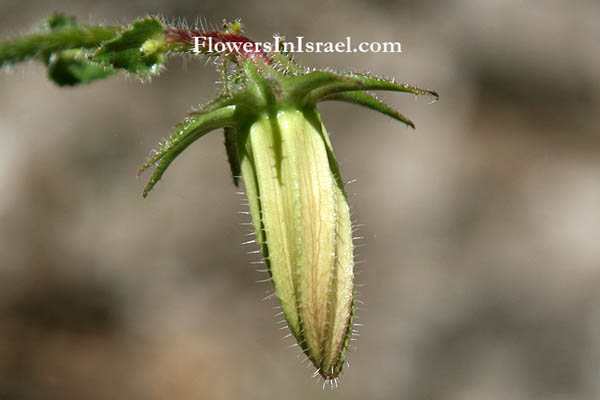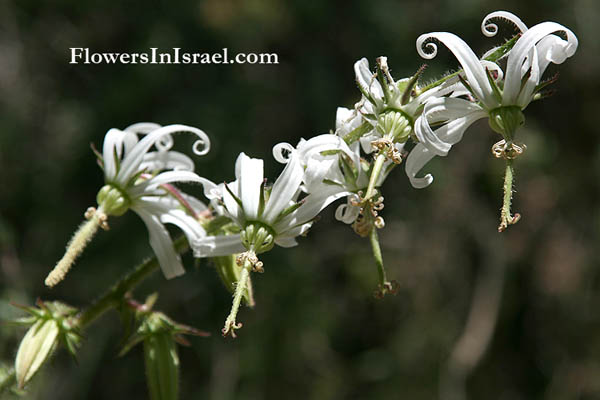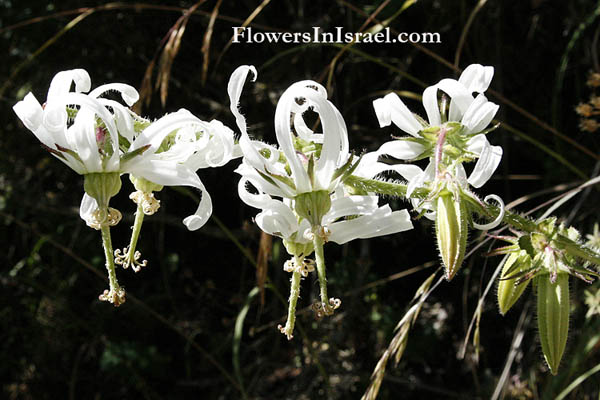Hebrew: מישויה פעמונית, Arabic: مثوية جرسية
| Scientific name: | Michauxia campanuloides L'Her | |
| Common name: | Rough-leaved Michauxia | |
| Hebrew name: | מישויה פעמונית | |
| Arabic name: | مثوية جرسية | |
| Plant Family: | Campanulaceae, פעמוניתיים |

|
| Life form: | Hemicryptophyte | |
| Stems: | 100-200 cm high; pilose | |
| Leaves: | Alternate, entire, dentate or serrate | |
| Inflorescence: | Solitary, up to 4 cm, nodding | |
| Flowers: | White; calyx 8-10 cleft, having the recesses covered by appendages; corolla 8-10-parted, rotate; stamens 8-10, free; filaments very broad, membranous; anthers yellow; style covered by hairs; stigma 8, filiform | |
| Fruits / pods: | Capsule drooping, 8-10-valved, dehiscing at the base; numerous seeds, ovate | |
| Flowering Period: | April, May, June | |
| Habitat: | Hard rock outcrops, mesic habitat | |
| Distribution: | Mediterranean Woodlands and Shrublands, Montane vegetation of Mt. Hermon | |
| Chorotype: | Mediterranean | |
| Summer shedding: | Ephemeral |

Derivation of the botanical name: Michauxia, named for Andre Michaux (1746-1803), one of the most extraordinary and dynamic individuals of early explorations in North America and the first trained botanist to explore extensively the wilderness east of the Mississippi River, including Spanish East Florida. campanuloides, resembling Canpanula, Bellflower. The Hebrew name: מישויה , transliteration from the scientific name.

|